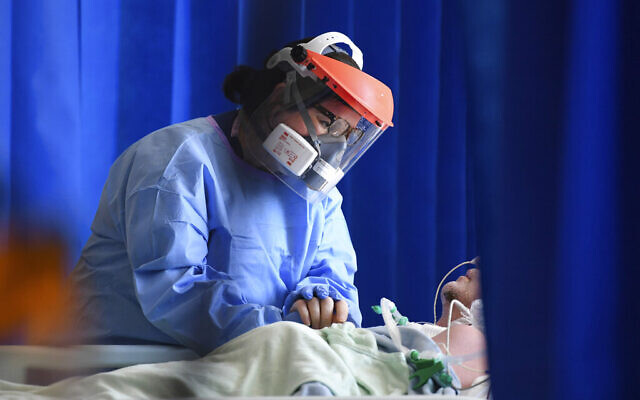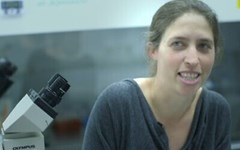
COVID-19 is so dangerous because the virus uses a three-pronged attack mechanism to stop cells from quickly triggering the immune system, Israeli scientists have concluded.
They offer a portrait of how exactly the SARS-CoV-2 virus behaves once inside human cells — they say it’s the most detailed to date — in an article published on Wednesday in the peer-reviewed journal Nature.
After hundreds of hours in their labs monitoring the virus interacting with cells, they have concluded that the virus mounts a hostile takeover on the cell’s protein-making machinery, and stops it from making proteins needed to galvanize the immune system.
“Our research helps to explain why this virus causes such serious disease suddenly,” lead author Noam Stern-Ginossar, of the Weizmann Institute’s Molecular Genetics Department, told The Times of Israel. “We have seen close up that it basically harms the ability of cells to send the necessary early signals to the immune system.
“This is why, with COVID-19, everything in terms of immune response can be badly postponed, and by the time the body feels SARS-CoV-2 there can be huge amounts of the virus.”
SARS-CoV-2 uses a trio of methods to keep infected cells quiet and stop them from sending messages to the immune system, and can succeed in subduing this communication ability for days, Stern-Ginossar said.

She suggested that this explains why COVID-19 patients often feel relatively well for days after infection, and then experience a sudden and drastic deterioration. By the time cells overcome the subduing effect of the SARS-CoV-2 virus on their messaging ability, the virus has greatly multiplied.
All three of the virus’ tactics result in it harming the ability of cells to produce proteins, which are needed to communicate with the immune system and can also themselves fight infection.
The first reduces the cell’s capacity for translating genes into proteins. The second actively degrades the cell’s messenger RNA, the molecules that carry instructions for making proteins from the DNA to the ribosomes. And the third prevents the export of messenger RNA from the cell’s nucleus, where it is synthesized, to the cell’s main chamber.
“The first of these processes was known, but the others were not,” said Stern-Ginossar, suggesting that her research significantly advances the understanding of COVID-19 and could be a major help to drug companies developing therapeutics.
“We now understand on a molecular level why we’re not mounting efficient anti-viral response, and knowing this may be able to better target therapeutics,” she said.
